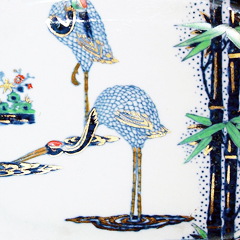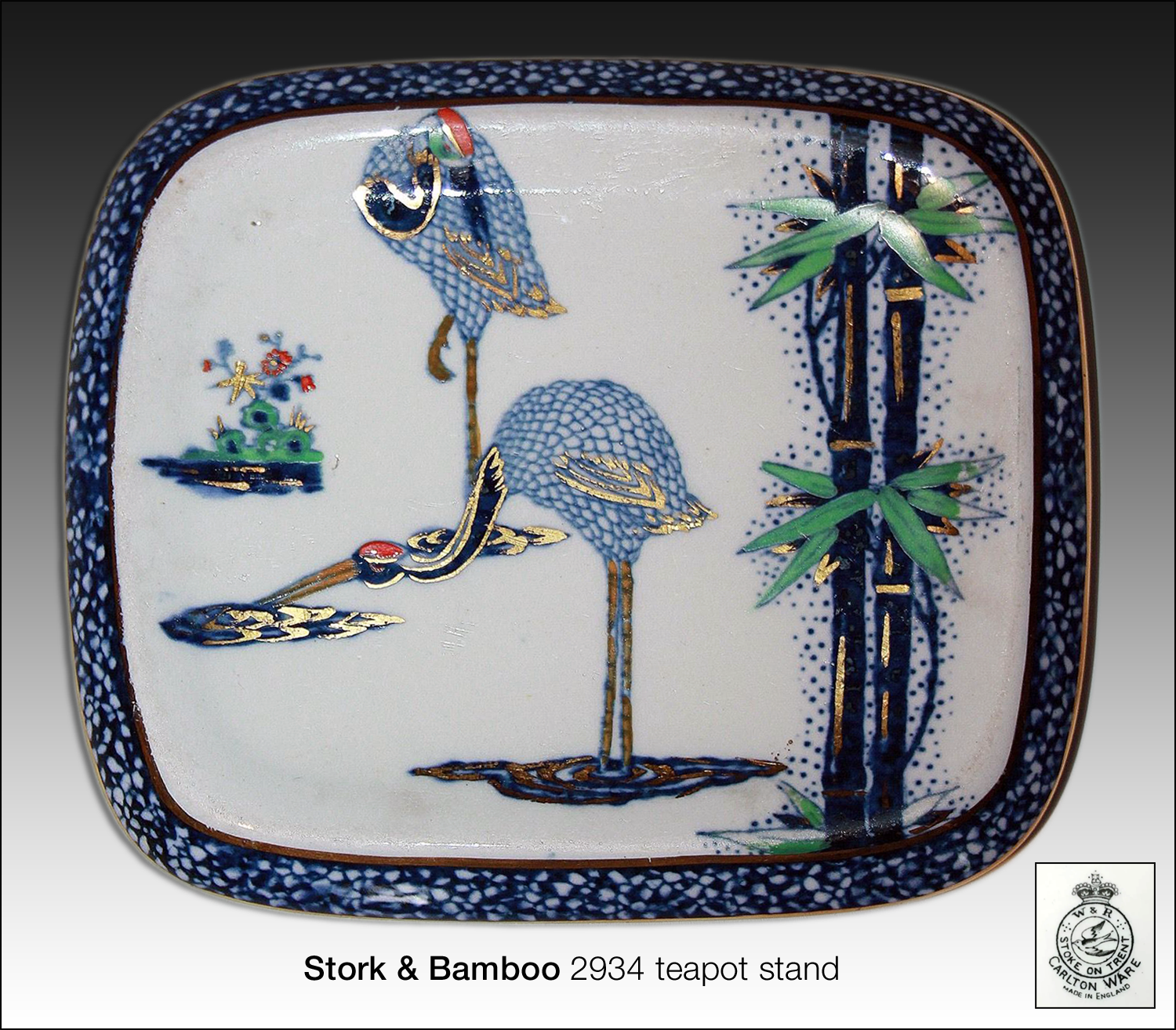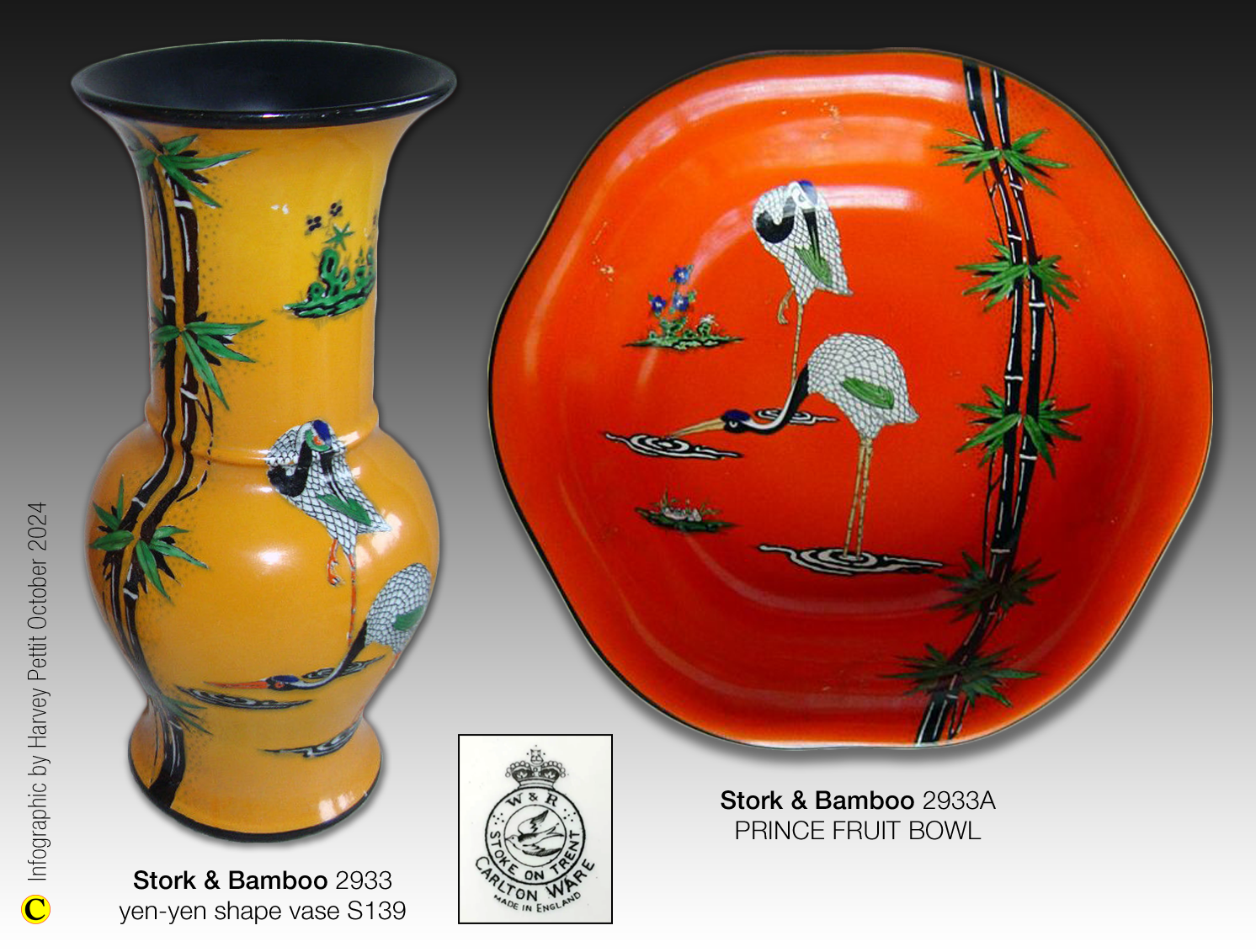Boulton's Birds - Part Five

The Stork & Bamboo pattern
and its Border
Devised by Enoch Boulton
by Harvey Pettitwith border artwork by Barbara Anne Lee
This is the fifth in a series of sixteen articles on bird patterns introduced by Enoch Boulton during his tenure as designer and decorating manager at the Carlton Works from 1921/22 to 1930.
Below are two examples of Carlton Ware's Stork & Bamboo, allocated the pattern number 2932. This variant uses an ELECTRIC BLUE ground.
Three birds were engraved onto the copper plate from which the pattern was printed onto tissue for transfer onto ware. Two are standing, and the third, used less often, is in flight. Their use was dictated by the shape and space available. I estimate that this striking pattern was introduced around 1925.

Left: AMORY shape coffee pot. Right: vase shape S326.
To see these examples fit your device's screen and/or to enlarge, click or tap on them.
To return to this page use your back button.

Printed in POWDER BLUE on a white ground. On-glaze enamels
and hand gilt detailing.
The design is perhaps more adventurous than Boulton's earlier bird patterns. With their shagreen-like plumage, the creatures are more stylised, as are the pools of water in which they stand. The bamboo too is more abstract.
To suit different pockets, Stork & Bamboo was made available in a wide range of decorations. Those printed in gold or hand gilt, as on the teapot stand on the right, were clearly more expensive to produce and therefore cost more to buy. In total, nineteen variants of the pattern were offered to Carlton Ware's customers.
The simpler versions, usually printed in black, could be quite dramatic with their use of brightly coloured grounds, as you can see from the two examples below.
A black line sufficed as a border. In Carlton Ware parlance, they were "edged in black".

Left - 2933 - yen-yen shape vase S139 printed in black on a BUFF (PODMORE'S AMBER) ground.
Right - 2933A PRINCE FRUIT BOWL printed in BLACK on a FLAME ground.
To see these examples fit your device's screen and/or enlarge, click or tap on them.
To return to this page use your back button.
BORDERS
The border that Enoch Boulton devised for his Stork & Bamboo pattern heralded an extraordinary range of original and modern borders that he and his successor, Violet Elmer, conjured up over the next fifteen years. This creativity continued until it was curtailed by the outbreak of World War Two in 1939. Below, Barb has redrawn the Stork & Bamboo Border for us, along with the narrow Stork & Bamboo Bead.
Stork & Bamboo Border
Stork & Bamboo Bead

as found on various examples, click or tap on their images above.
It appears that only the more expensive gold-printed variants of the pattern employ these ornate borders. Sometimes the border's pendulous fruits are decorated with RUBY LUSTRE, and some of its leaves painted green.
As shown earlier in this article, variant 2934, as on the teapot stand, uses Magpie Border Bead, while those versions printed in black use a simple black line to edge the pattern.
HarveyV1 November 2024.
If more accurate information comes to light I will update this page.
Barb would like to thank the members of our companion Facebook Group who supplied good quality images to help her replicate the borders above.
